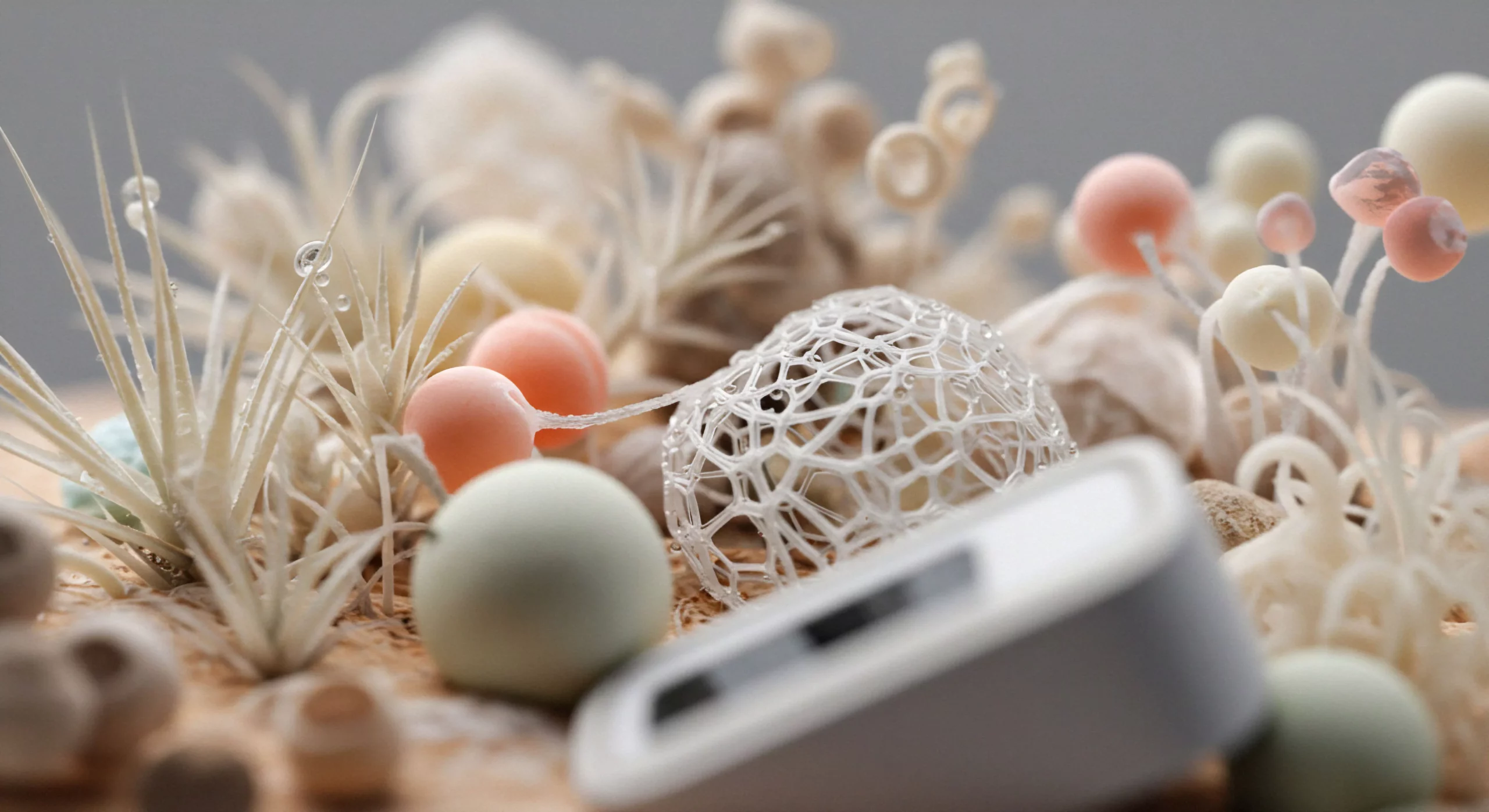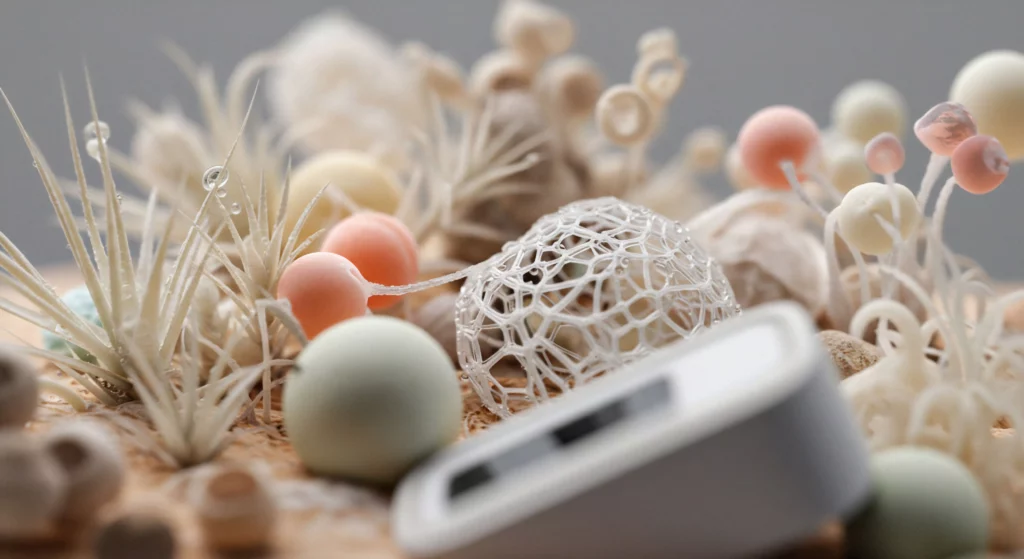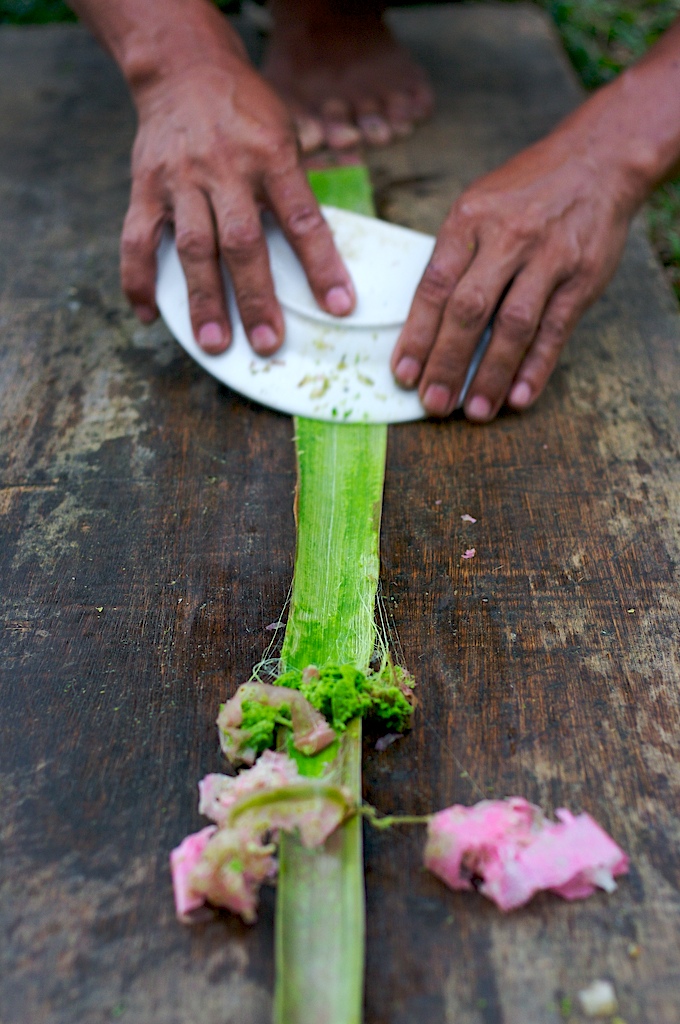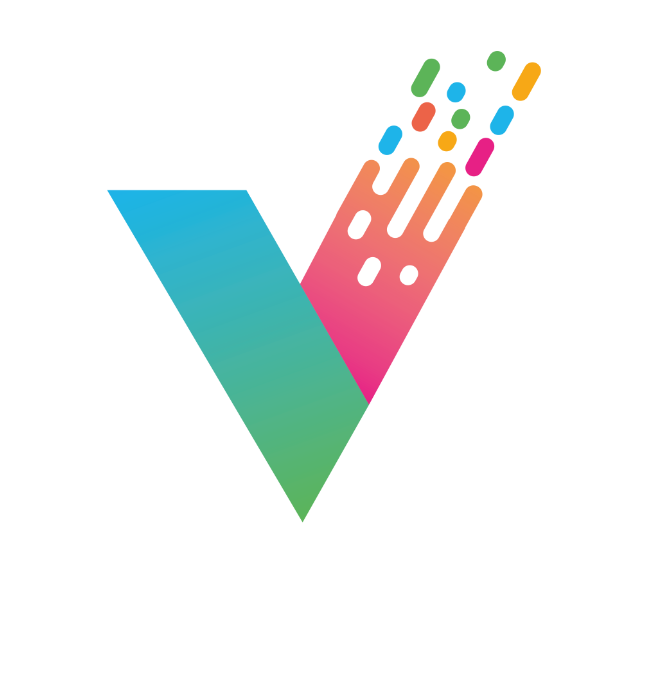
Bioeconomy: Weaving a Sustainable Future in Textiles
In recent years, the term bioeconomy has emerged as a beacon of hope for a more sustainable and circular future. But what does it mean, and how is it transforming industries like textiles?

Macro photo of Mycelium leather and other sculptures – ph. Sustainability directory
What is Bioeconomy?
At its core, the bioeconomy is an economic system that utilises renewable biological resources—such as plants, algae, and microorganisms—to produce food, materials, and energy. Unlike traditional industries that rely heavily on fossil fuels, the bioeconomy focuses on sustainability, aiming to reduce carbon footprints and promote circularity.
According to the Organisation for Economic Co-operation and Development (OECD), the bioeconomy already accounts for a significant portion of global GDP, and its impact is only growing. From food production to pharmaceuticals, the applications are vast—but textiles represent one of the most exciting frontiers.
The use of Bioeconomy in Textiles
The textile industry, known for its significant environmental impact, is undergoing a transformation through the adoption of bio-based materials. These materials are derived from renewable sources and are designed to be biodegradable or recyclable, addressing issues like microplastic pollution and excessive waste.
Innovations include:
- Mycelium-based leather: A sustainable, vegan alternative to animal and plastic leather, made from the branched, root-like network of fungal cells (mycelium) grown on agricultural waste like sawdust or wood chips.
- Algae-based fabrics: Sustainable textiles made from rapidly growing aquatic organisms, offering eco-friendly alternatives to conventional materials like cotton and polyester, offering biodegradability and reduced environmental impact.
- Agricultural waste fibers: Materials sourced from by-products like banana stems or pineapple leaves, reducing waste and promoting resource efficiency.
These advancements not only mitigate environmental harm but also open new avenues for creativity and design in the fashion industry.

The manual extraction of pineapple fibres (image, Wikipedia)
Why Is the Bioeconomy Gaining Momentum?
Several factors contribute to the rising prominence of the bioeconomy:
- Environmental Concerns: Growing awareness of climate change and pollution has led consumers and industries to seek sustainable alternatives.
- Technological Advancements: Innovations in biotechnology and materials science have made bio-based materials more accessible and cost-effective.
- Policy Support: Governments worldwide are implementing policies that encourage the development and adoption of bio-based solutions.
Greece’s Role in the Bioeconomy
Greece is making significant strides in the bioeconomy, particularly in the textile sector. The country actively participates in numerous European projects focused on textile recycling and the development of sustainable fabrics.
A notable example is the EU research project SUBBIMATT which focuses on developing bio-based and bio-inspired materials for smart technical textiles, aiming to address current and future energy and environmental challenges.
Vetrine partner CHIMAR Hellas participated in the RESYNTEX project (2015 – 2019), funded under the EU’s Horizon 2020 programme (grant agreement 641942), that aimed to establish a circular economy model by converting post-consumer textile waste into valuable raw materials for the chemical and textile industries. The project focused on transforming non-wearable textile waste into secondary raw materials through industrial symbiosis, integrating textile recycling with chemical production processes. Within this initiative, Chimar contributed by developing protein-based thermosetting polymers. These polymers were synthesized by extracting proteins from textile waste, such as wool and denim, and utilizing them as partial replacements for phenol in phenol-formaldehyde (PF) resins. This approach aimed to reduce the environmental impact of traditional adhesives used in wood-based panel production. Chimar’s research demonstrated that incorporating protein hydrolysates from textile waste into PF resins could replace up to 30% of phenol content, enhancing the sustainability of the adhesive without compromising performance. Additionally, textile fibers were tested as partial substitutes for wood, achieving up to 20% replacement, thereby promoting the use of recycled materials in wood-based panel manufacturing. The RESYNTEX project exemplifies innovative approaches to textile recycling, showcasing how waste materials can be repurposed to create sustainable products, such as bio-based adhesives for the wood industry. Chimar’s involvement highlights the potential for integrating circular economy principles into traditional manufacturing sectors, contributing to reduced environmental footprints and promoting resource efficiency.
In recent years, several Greek companies have also become leaders in textile recycling and sustainable materials, including RECYCOM, Fabric Republic, and KARATSIALIS BROS & CO.
Recognizing the importance of education in advancing the bioeconomy, several Greek universities have established Master’s programs dedicated to the Circular Bioeconomy, where sustainable textiles form part of the curriculum. These include:
-
- University of Piraeus – Department of Economics – MSc in Bioeconomy, Circular Economy and Sustainable Development https://bioeconomics.edu.gr/?lang=en
- University of Thessaly – Department of Forestry, Wood Sciences & Design – MSc in Multifunctional Management of Natural Ecosystems and Bio-economy https://msc-forest.fwsd.uth.gr/en/
- International Hellenic University – MSc in Bioeconomy: Biotechnology and Law https://www.ihu.gr/ucips/postgraduate-programmes/bioeconomy
- University of Aegean – Centre of Sustainable and Circular Bioeconomy https://bioeconomy.aegean.gr/
Beyond academia, several non-profit organizations have emerged to raise public awareness and promote collaboration between municipalities, businesses, and research institutions. One prominent example is the Circular Bioeconomy Hub (CBioHub) a non-profit organization dedicated to advancing circular bioeconomy practices across Greece through sustainable projects, innovative research, and community education.
Together, these initiatives, combining research, education, industry participation, and community engagement, position Greece as a key player in the European bioeconomy landscape, with the potential to influence global sustainability trends and drive innovation in the textile sector.
Career Opportunities in the Bioeconomy
The rise of the bioeconomy opens up diverse career paths:
- Biotechnologists and Material Scientists: Develop new bio-based fibers and materials.
- Sustainability Consultants: Advise companies on integrating sustainable practices into their operations.
- Product Designers: Create innovative products using bio-based materials.
- Policy Makers and Advocates: Shape regulations and promoting the adoption of bio-based solutions.
- Entrepreneurs: Establish startups focused on bio-based products and services.
The activities of the VETRINE EU project complement academic education by enabling young scientists to deepen their knowledge and specialize in the Circular Bioeconomy concepts of the textile sector. The project delivers training programs tailored to the skills required for green and circular jobs, aiming to bridge the gap between education and industry, promote sustainable entrepreneurship, and inspire young professionals to develop innovative bio-based business ideas. VETRINE’s initiatives also foster collaboration among universities, SMEs, and policy actors, contributing to the development of regional bioeconomy networks across Europe. Through these actions, the project enhances employability in sectors such as bio-based textiles, agri-food innovation, green chemistry, and renewable materials, aligning seamlessly with Greece’s growing expertise and leadership in these fields.
Looking Ahead
The convergence of environmental awareness, technological innovation, and supportive policies is propelling the bioeconomy into the spotlight. As industries, including textiles, embrace bio-based solutions, they contribute to a more sustainable and circular economy.
For consumers, this shift means access to products that are not only innovative and stylish but also environmentally responsible. By supporting brands and initiatives that prioritize bio-based materials, individuals can play a pivotal role in driving the transition towards a more sustainable future.
Dr Electra Papadopoulou
Senior Researcher-Bioeconomy expert
CHIMAR HELLAS SA
Main photo credit: Mycelium leather (creative commons) from https://lifestyle.sustainability-directory.com/term/mycelium-leather


